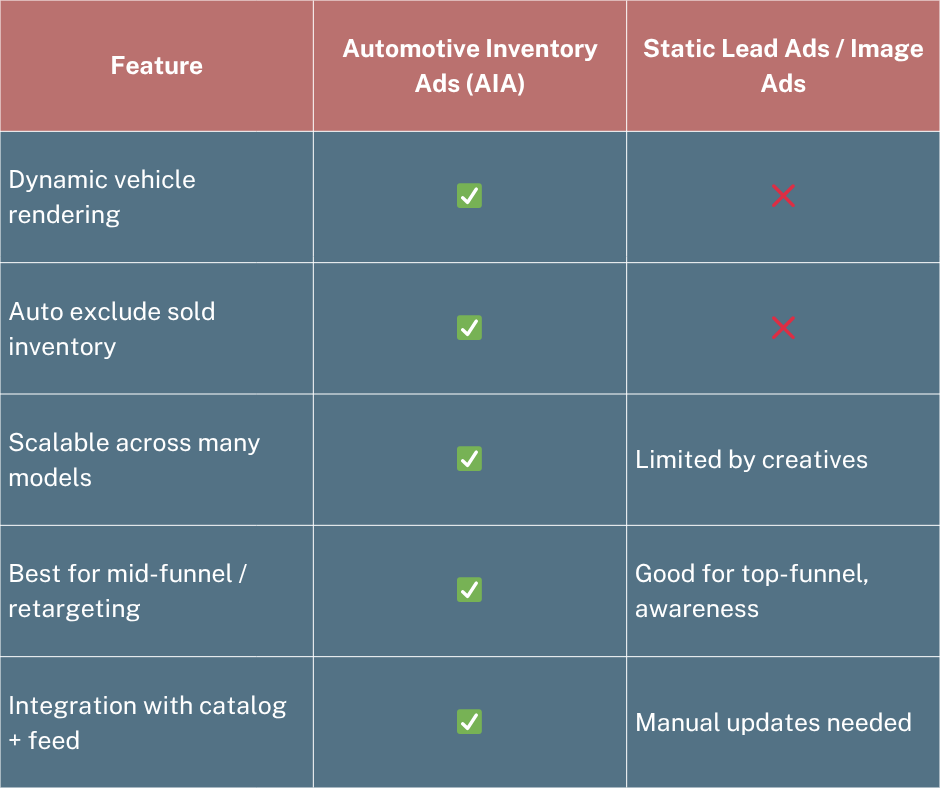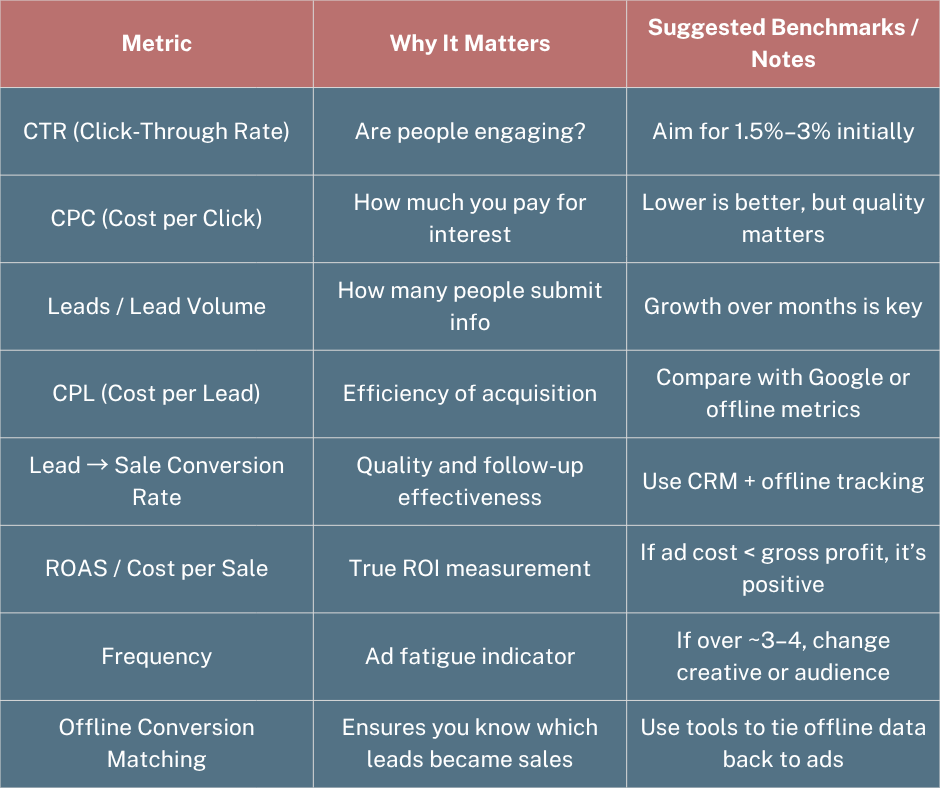Facebook & Instagram Ads for Car Dealerships: Driving Leads Beyond Google
Imagine converting someone’s swipe on Instagram into a test drive appointment on your lot. That’s the power of Facebook & Instagram ads when done right. For many car dealerships in Connecticut, by the time a buyer searches on Google, they’re already influenced by what they saw on social media.
This blog shows step by step how dealerships can launch effective campaigns on Facebook & Instagram, extending reach beyond Google, engaging local car buyers, and driving real leads.
Why This Topic Matters
Digital Behavior of Car Buyers
Over 90% of car shoppers begin their journey online.
Many begin with casual browsing like scanning images, comparing features, rather than typing “car dealers [city]” immediately.
Social platforms like Facebook and Instagram occupy hours every day for millions; that’s where attention is before search.
The Rise of Inventory-Driven Social Ads
Automotive Inventory Ads (AIA) are specially designed for auto dealers: your car catalog is fed into Meta’s system, and the platform dynamically shows inventory to relevant users based on behavior.
Best practices emphasize keeping your catalog up to date, Facebook recommends frequent updates so sold or off‑lot vehicles aren’t shown.
Marketplace Changes You Must Know
As of January 30, 2023, Meta no longer allows dealerships to post vehicle listings directly from their business pages into Facebook Marketplace.
That means organic Marketplace listing as a free channel for dealers has been largely removed; the path forward is paid ads using catalog / AIA to access Marketplace‑adjacent visibility.
So, your social strategy should no longer rely on free Marketplace listings but should instead focus on paid amplification, dynamic ads, and smart retargeting.
Core Strategy for Meta Ads in the Car Industry
To succeed, your strategy should rest on a few foundational pillars. Think of these as the gears in your engine:
1. Automotive Inventory Ads (AIA)
This is your primary engine for social ads. Instead of making separate ads for each car, you upload your inventory feed (models, images, price, availability) and let Meta show relevant vehicles dynamically to interested users.
Key features:
Auto exclude sold or unavailable vehicles
Scale easily across your entire lot
Show cars matching what users have already viewed or expressed interest in
2. Retargeting & Lead Capture
Someone sees a car but doesn’t convert? Use retargeting to re‑serve that vehicle or similar ones, with a clear call to action: “Book Test Drive,” “Get Offer,” etc. Also use lead forms via Messenger or in‑app forms to collect contact information cheaply.
3. Audience & Geo Segmentation
Your audience must be local. Use radius targeting (e.g., 0–15 miles, 15–30 miles) to show ads to people physically able to visit your dealership. Exclude zones where you never get conversions. Also use lookalike audiences, people who resemble your existing car buyers.
4. Creative & Messaging
Good ads combine strong visuals, clear messaging, and incentives. Use multiple images (interior, exterior, feature shots), video walkarounds, and overlay text like “Only 2 left,” “0% APR Financing,” or “Local stock.”
Test different headlines, CTAs, angle approaches (financing, trade-in, warranty). Your creativity should speak to your location, your unique offers, and your trustworthiness.
5. Integration With SEO & Google Ads
Use your top vehicle + local keywords (e.g. “SUVs in Springfield,” “2024 Sedans [City]”) in social ad copy.
Retarget users who clicked your Google Ads or visited your site.
Send social traffic to landing pages or blog posts optimized for SEO to support keyword authority.
Use consistent location signals (city, zip codes) on website, ads, and local SEO listings.
Step-by-Step Guide: From Zero to Running Meta Ads for Car Dealerships
Step 1: Set Up Technical Foundations
Create or verify your Meta / Facebook Business account & Ads Manager
Install the Meta Pixel / Conversion API on your website
Track events like View Content (user views a car page), Lead, Initiate Checkout
This tracking is vital for retargeting and measuring success
Build your vehicle inventory feed / catalog
Include fields: make, model, VIN, price, images, availability
Use CSV, XML, or a URL feed
Ensure daily or frequent updates so the ads show real, in-stock inventory
Connect your catalog & pixel in Meta’s Catalog Manager / Commerce Manager
Group vehicles into sets (by make, type, location).
Create a dynamic ad template so Meta can combine images + data fields (price, year, model) automatically.
Step 2: Build Campaigns
You’ll typically run at least three campaign types:
Prospecting / Catalog Campaign
Objective: show new vehicles to broad but localized audiences
Utilizes your catalog, dynamic creativeRetargeting / Conversion Campaign
Audience: users who viewed VDPs or engaged with prior ads
Show the same vehicles or similar ones, with strong CTALead Capture / Form Campaign
Use Facebook’s lead ad format (embedded forms) for quick contact capture
Keep it short (name, phone, vehicle interest)
Step 3: Geo-Targeting Setup
Core zone: e.g. 0–15 miles
Secondary zone: 15–30 miles
Test/Expansion zone: up to 50 miles if service area allows
Exclude zones with no returns
Adjust bids by zone (higher in core areas)
Step 4: Creative & Copy Execution
Use 3–5 strong images per vehicle (exterior, interior, close-up)
Test short videos / walkarounds (15–30 seconds)
Include location, price, year, call-to-action
Incentives help (special financing, trade bonuses, warranties)
Rotate ads every 2–4 weeks to avoid fatigue
Step 5: Launch & Monitor
Start with moderate daily budgets
Monitor early metrics: CTR, CPC, leads
Pause underperforming ad sets
Shift spend to the best models, zones, audiences
Run split tests on creative, copy, audience
Refresh creative periodically
Step 6: Tie Leads to Real Sales
Ensure your CRM captures which campaign/vehicle each lead came from
Use offline conversion tracking to map leads to actual car sales
Analyze which campaigns, models, zones delivered actual revenue
Use that data to adjust ad spend and strategy
Pro Tips & Expert Advice
Keep your catalog polished & current — low resolution images, missing prices, or sold vehicles hurt performance dramatically
Use short retargeting windows (0–7 days) with higher bids, and also run 8–30 day windows with moderated bids
Exclude existing customers using your CRM lists so you don’t waste budget on buyers you’ve already closed
Test generative ad text —Meta used AI trained with real ad results to write Facebook ads and it boosted clicks by 6.7%, showing smarter AI makes ads work better.
Batch creative rotations — swap images, angles, copy to fight ad fatigue
Respond fast to leads — in the automotive industry, being prompt can significantly increase close rates
Iterate based on real sales — don’t optimize purely for leads; optimize for what leads turn into revenue
Example Structures & Mockups
Sample Ad Mockup (Dynamic Catalog/Carousel)
[ Carousel of 4 vehicles ]
Slide 1 → “2024 SUV – $28,995”
Slide 2 → “2023 Sedan – $19,800”
Slide 3 → “2025 EV – $42,500”
Slide 4 → “0% Financing for 36 mos”
Headline (dynamic): “Your Next [Make] Awaits Near You”
CTA: “View Inventory” or “Message Now”
Strategy Comparison Table
Geo‑Radius Example (for a Connecticut or Local Market)
0–15 miles: core city / suburbs
15–30 miles: surrounding counties
30–50 miles: rural or regional testing
Overlay this on a map graphic showing your dealership at center, highlighting these zones.
How This Ties Into SEO & PPC
Keyword alignment: Incorporate your top vehicle + location keywords (e.g. “2024 SUV [City]”) into ad copy and landing pages
Retarget cross-channel: Send Google search or organic visitors into your Facebook retargeting pool
SEO content support: Promote blog posts or landing pages that rank for local + model keywords via Facebook ads
Consistent location signals: Use identical city / zip references across website, ads, and local SEO profiles
Attribution tracking: Use UTM parameters and CRM data to identify which channel leads came from
This synergy ensures your marketing is not fragmented but reinforcing.
Key Metrics & KPIs You Should Watch
How Can We Help?
Deep dealership experience — we don’t need to learn vehicle types or buyer behavior
Hands-on agility — fast optimizations and adjustments vs rigid processes
Accountability & transparency — you see campaign metrics tied to real leads and sales
Integration skill — SEO, PPC, social all work together, not in silos
When you work with us, you get automotive marketing specialists, not generalists who juggle multiple industries.
If you’re ready to move past basic ads and truly drive showroom visits from social audiences, let’s talk. 41 North Digital can audit your current setup, map out a tailored Facebook + Instagram strategy (with catalog setup, geo segmentation, creative direction, and lead-to-sale tracking), and help you get started without the guesswork.
Reach out today to schedule a free consultation or request a custom roadmap for your dealership.



